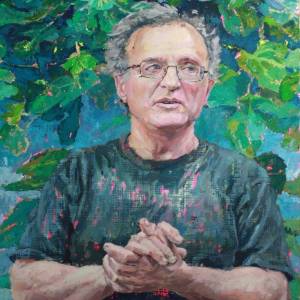"MORE THAN TWENTY THOUSAND"
This stone stands in Clark Park, a short walk from my place. I pass it very often, and today I passed it twice during my photographic excursion. It's been very hard to choose which shot to blip. I got a few decent shots of a hawk in a tree, many good ones from the cemetery, and others from nearby that would have done just fine, with a little time invested in my description.
But I chose this monument because when I think of it, it makes me sad. I grew up pronouncing the town "Getty's-burg" and only in recent years realized that in that place it's "Gettis-burg," the letter Y being soft. It takes about three hours to drive there today. But the sick & wounded came in from throughout the theater of war, and what is now our park is only part of the farm that hosted the hospital, which was partly tents and part wooden buildings. There was also a plaque, placed along the sidewalk about ten years ago by the state Historical Society, but it was stolen within a year. It would be in this picture had they not done so.
I like this monument in part because there was a doctor named Daniel Garrison Brinton who was an anarchist here in the last decade of his life, and who is still a major figure in the history os ethnology & anthropology. He was a surgeon and treated the Union troops until suffering heat stroke at Chattanooga, and then he returned home and treated those with nerve damage. I re-discovered his anarchism myself. When the famous anarchist & geographer Peter Kropotkin made his only visit to the city, he dined only with Brinton, even though the every social reformer in town wanted to meet him. More on Brinton here (Thanks to Ceridwen for reminding me of that. In the portrait he's wearing his badge of the Order of the Loyal Legion, a club for former Union Army officers.
I remember visiting the martyred village of Oradour-sur-Glane in France, where around 650 people of all ages were slaughtered in 1944. There are plaques in three spots, where the killings happened. They read:
"Stop and think a moment, for this is a place of torture."
To be on a surgeon's table here during the Civil War was a torture, but I'd choose to state the matter as sorrow, or pain. The bronze plaque at the foot of this stone reads:
"THIS STONE FROM THE BATTLE-FIELD OF GETTYSBURG IS PLACED BY CITIZENS OF THE NEIGHBORHOOD IN THE YEAR 1916 TO MARK THE NEARBY SITE OF THE WEST PHILADELPHIA GENERAL HOSPITAL OF THE UNITED STATES ARMY -- LATER DESIGNATED THE SATTERLEE GENERAL HOSPITAL IN HONOR OF BRIGADIER-GENERAL RICHARD SMITH SATTERLEE U.S.A., A NOTED SURGEON -- AND TO COMMEMORATE THE SERVICES OF THE PATRIOTIC MEN AND WOMEN WHO AS VOLUNTEER PHYSICIANS, NURSES AND CO-WORKERS UNDER GENERAL ISAAC I. HAYES, SURGEON-IN-CHIEF, HERE MINISTERED FROM JUNE 9, 1862 TO AUGUST 3, 1865 TO MORE THAN TWENTY THOUSAND SICK AND WOUNDED SOLDIERS OF THE CIVIL WAR."

Comments
Sign in or get an account to comment.


